Don’t forget a watch: 5 things to know about transatlantic crossings on the Queen Mary 2
En route to Southampton, UK – The Queen Mary 2 is not a cruise ship, as Captain Andrew Hall points out multiple times, it's an ocean liner. That makes it subtly different from other cruise experiences in ways that can take getting used to.
The Queen Mary 2, launched in 2004, was built to make long transoceanic voyages, allowing it to travel the world. In 2024, it steamed out of New York on Jan. 3 to Southampton in the United Kingdom.
Typically, the Queen Mary 2 does world cruises from January to April, then starts her transatlantic season with Canadian and New England cruises in the fall and Caribbean in the winter.
Traveling across the open ocean for days at a time requires a different type of ship. Ocean liners are stronger, built to withstand intense weather and for speed to make up for weather delays. They include more steel in their hulls, long, tapered bows, a bridge set high atop the ship, lifeboats near the top of the ship to protect from high seas and more space for fuel as they are making long voyages between ports, according to a Cunard spokesperson.
USA TODAY independently embarked on the Queen Mary 2 sailing from New York to Southampton on January 3. Here are five things that made this voyage different from a regular cruise.
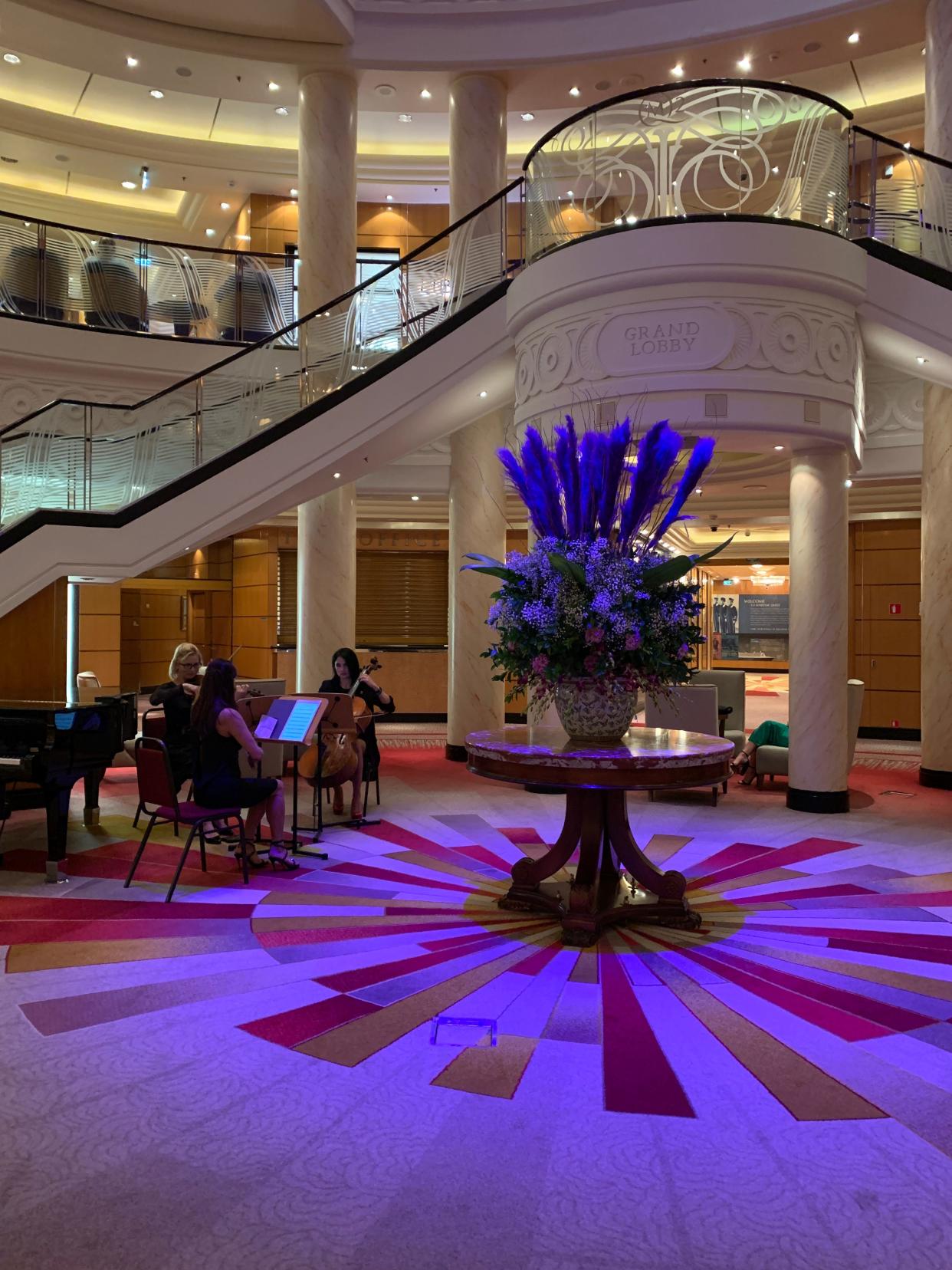
1. A digital detox is harder than you think
The Queen Mary 2 offers something many people crave – eight straight days at sea with absolutely no phone or internet unless you choose to pay extra for it. The service is good and strong in most places onboard, but it costs $18 a day for the voyage for the "essential" onboard internet package and $24 a day for the full voyage for the "premium" package.
If you want to make calls you'll need to sign up for a cruise package with your cell phone carrier, which on AT&T was another $100 for (spotty) cell service. The ship does allow you to log into its online schedule using your own tablet or phone, so you can see what’s on for the day, but that’s all.
Having more than a week to fully decouple from your inbox makes the trip even more relaxing – until you realize just how many things in life you depend on your phone for. Tracking your sleep from a smartwatch? Forget it. Wanting to check on the scores of a big game? Better hope your German is up to snuff. On our crossing, Sports 24 was showing NFL games in German, though it was amusing to hear announcers hammer away very Teutonically until they slip in a “und …. touchdown!”
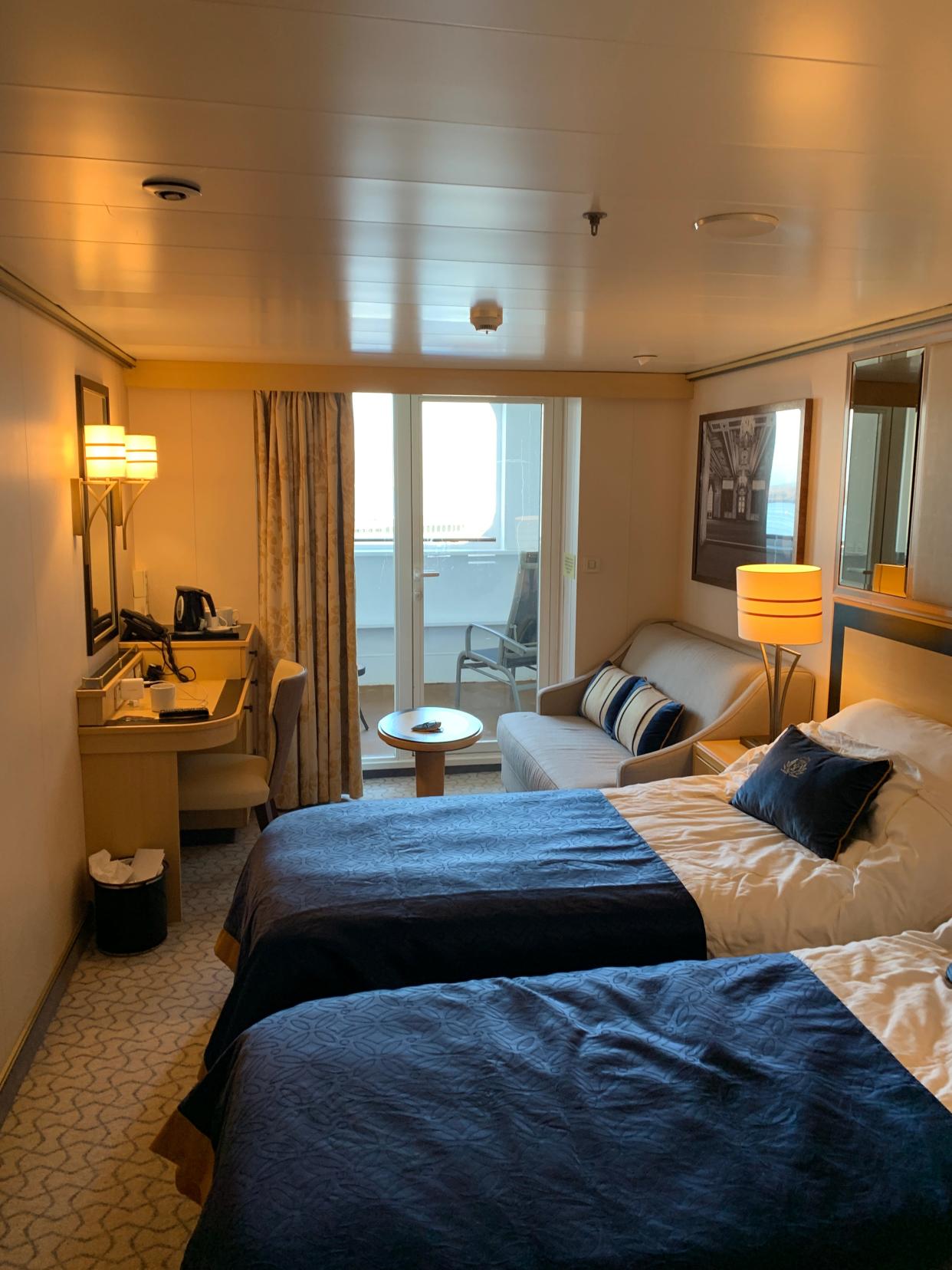
Wondering what’s going on in the world? Best to hightail it up to the library on deck eight to grab the ship’s daily printed news page update before they’re all gone.
Perhaps hardest of all, for the number of people making inquiries at the Purser’s Desk, was that it’s impossible to download new books to a Kindle. So those who had planned to do digital reading onboard instead found themselves making trips to the ship’s library and bookstore. Not that there's anything wrong with finding a cozy nook and reading a real book as the waves go by.
Even if you do buy the internet package, there are issues. Depending on where you are onboard, the Wi-Fi signal is generally pretty strong. But for the less expensive packages only one device at a time can be logged on to the system at a time. It is surprising – and frustrating – how many things use two-factor authentication these days. That's where a program or an app sends a code to your phone that you need to be able to log in. If you're used to working on a laptop, you do this all the time without thinking about it. But if you can only be on one device at a time, it's a hassle as you've got to quickly log out of one device, log into another, and then log out of that one and back into the first one.
Most major cruise lines have been making the switch to Starlink-powered internet, promising better and more stable connections.
2. Bring a real watch
Yes, you might have to borrow one, but it’s probably worth it. At least one in three Americans wear some type of smartwatch. Among those who don’t, pulling out their phone to check the time is taking the place of a glance at their wrist. So for an increasing number of people, knowing what time it is depends on an electronic device that’s updating itself via the internet.
This was a problem as the ship moved its clock ahead an hour on four separate days to adjust to the five-hour time difference between Eastern time in New York and Greenwich Mean Time in London. Living on ship's time is actually lovely, there's no jet lag and it's a kinder, gentler way to make the shift.
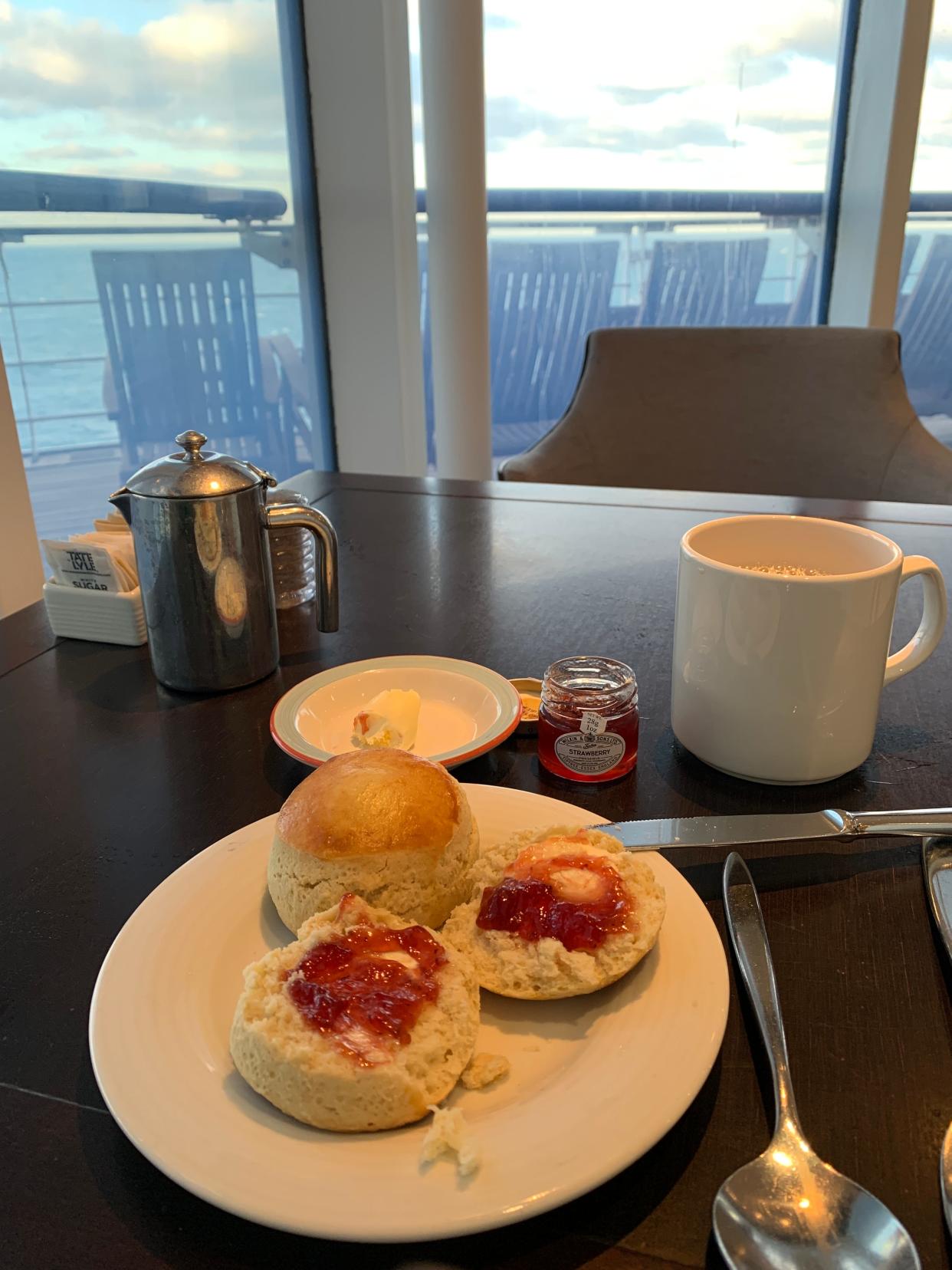
We started in New York time, went to Halifax in Canada, Nuuk in Greenland, Belém in Brazil, Ponta Delgada in the Azores and finally Southampton in the United Kingdom.
The trick is to go in and tell your phone what time zone you’re in. Unfortunately, most people don't know how to do that because their phones automatically update, leading to long lines at the ship's Internet Help Desk explaining to people how to reset their phones. All that's required is opening up the Date & Time settings and typing in the city name.
On the trip from New York to the United Kingdom, Capt. Hall sets the clock ahead an hour at noon on four days. In his daily announcement, he helpfully told passengers the clocks were moving forward and that they should be set to the time of a specific place. By the second day, most people seem to have gotten the hang of it. The only problem was if you made an appointment to meet someone at 12:30 on one of the time change days – because on those days there was no 12:30 on board the ship.
On westbound crossings, the clocks are set back one hour from 2:00 am to 1:00 am.
3. The North Atlantic in winter is no joke
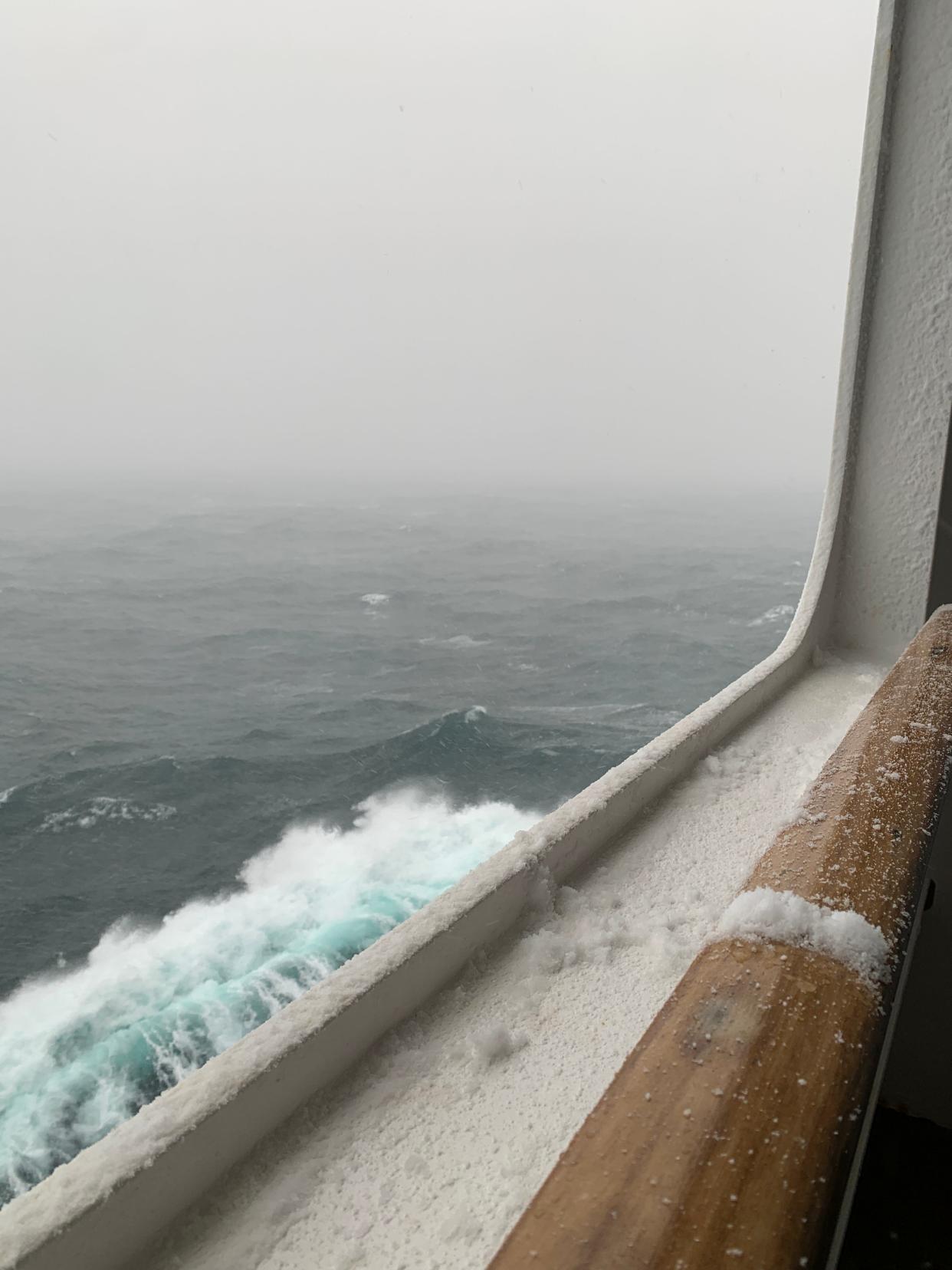
The North Atlantic in winter is not for the faint of heart. Seas can be rough, heavy weather is common and the captain’s announcements are full of phrases like “complex weather events.” The crossing is not a quick trip from Florida to the Bahamas by any stretch of the imagination.
There are deck chairs, outdoor pools and even a basketball court, but few people were out using them. The waves can be as high as 30 feet, and the winds are icy and strong – on this crossing, most days, they were either 8 or 9 on the Beaufort Wind scale, which is gale and severe gale. When it was calmer, people walked laps on the deck, but they were wearing heavy down jackets, boots, hats and gloves.
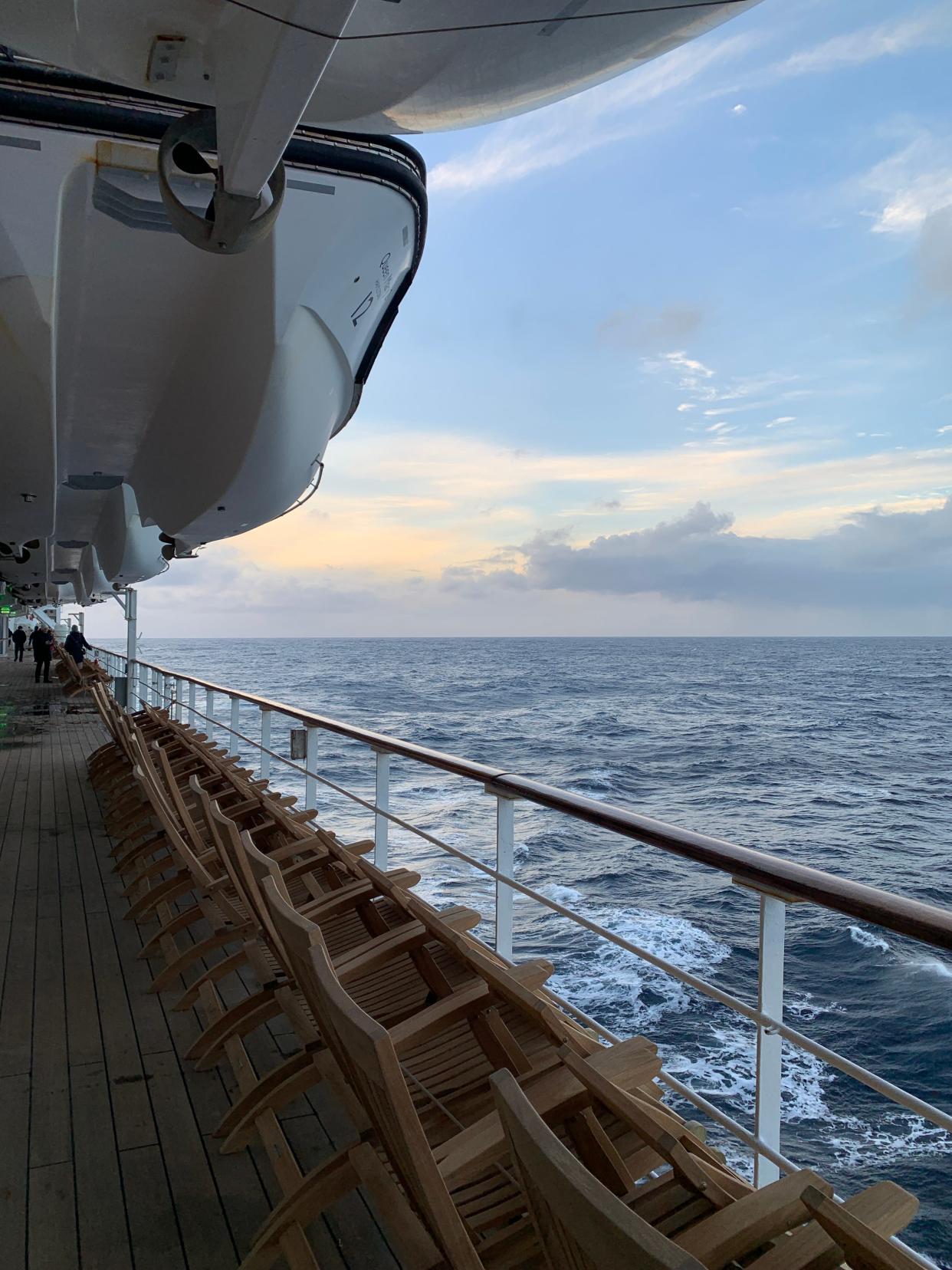
For some, the rocking of the boat is restful, like being in a hammock. For others, it’s an invitation to sea sickness. On the second day of the voyage, sanitary bags appeared in kiosks around the ship and the captain’s daily message included the helpful note that the Purser’s Desk had boxes of sea sickness pills (Avomine, which is the UK version) at the ready.
4. Be ready for cold
Bring sweaters and possibly long underwear. On the winter crossing outside temperatures hovered between 36° and 42° most days. Anything near the windows was cool. Dining rooms and various ship rooms were heated but still not short-sleeve ready unless you run hot. People who were prepared for an English winter and wearing sweaters and warm pants were doing fine. Those dressed for warmer climes were sporting puffers at breakfast.
For several days on the January crossing to England it snowed, and small but recognizable snowmen appeared on various outdoor decks. You had to view them through the portholes as the decks were closed due to the high winds and danger of ice and slipping.
5. They're serious about the whole 'Smart Attire' thing
Other cruise lines make a point of their “fun and frolic” ethos, with a come-as-you-are dress code to make everyone comfortable, at least during the day. This became even more pronounced during the pandemic.
However, on board the Queen Mary 2, people very much take the dress code seriously – though it could, in part, be the cold winter weather. Almost no one wears shorts, even what Carnival Corp. called “dress shorts.”
During the day, people wear mostly slacks and sweaters, and it was rare indeed to see T-shirts (especially ones with writing on them), and there are precious few tennis shoes in evidence. Mostly, one only saw shorts, sports attire, or T-shirts on the way to or from the gym or spa.
At night, things go up several more notches for those dining in the main dining rooms. Women were attired in an array of lovely, often sparkly, dresses or nice pants suits while almost every man had on a suit and tie, except for those wearing tuxedoes and at least one Scottish gentleman rocking a full dress kilt.
This article originally appeared on USA TODAY: From NY to the UK by water: 5 things to know aboard the Queen Mary 2